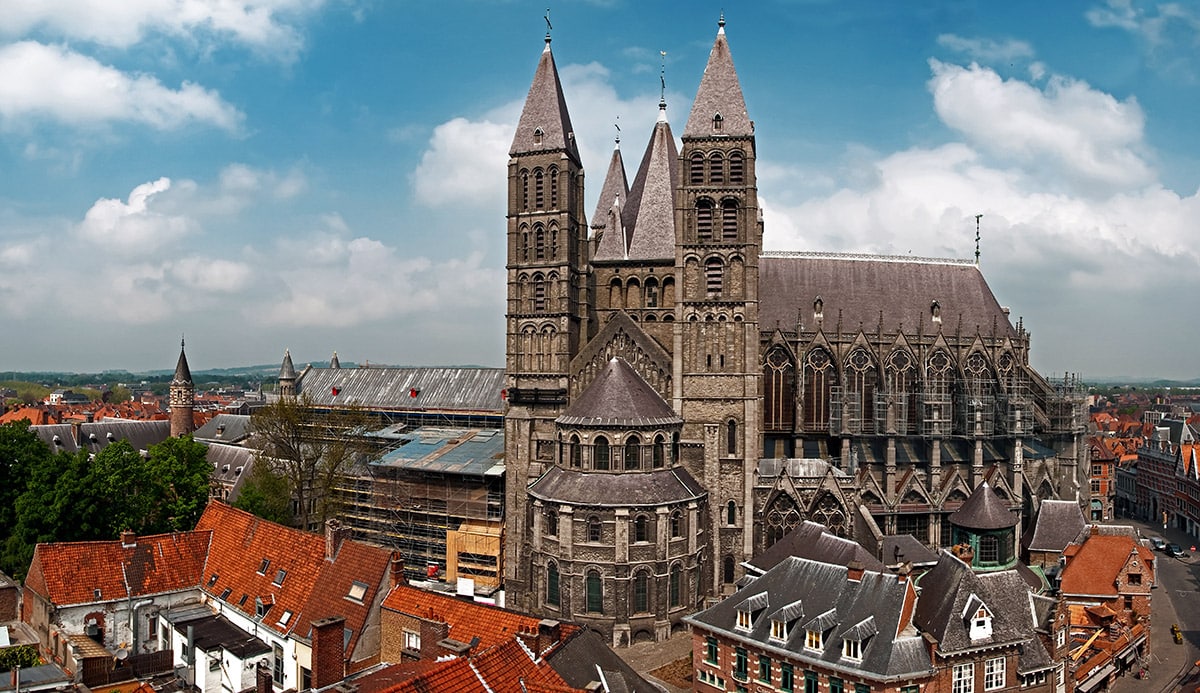- Daily & Weekly newsletters
- Buy & download The Bulletin
- Comment on our articles
After Notre Dame: Are Belgium’s cathedrals safe from fire?
As many bells in cathedrals and churches across Belgium rang out last night in honour of the Notre Dame, authorities spoke to the press today about their readiness to handle a similar emergency. While Belgium’s cathedrals have taken precautions in the event of a fire, being able to douse the kind of flames that were seen emitting from the Paris monument yesterday evening is always problematic.
A fire in Paris’ Notre Dame Cathedral last night destroyed much of the roof of the 850-year-old structure. Its famous and numerous wooden beams under the roof’s concrete vaulting went up like matchsticks. The cathedral was undergoing a major renovation project that some say came too late.
Now Belgian cathedrals are being asked about their own fallibility in the face of such an event. Renovations over the last 20 years do seem to be key to their ability to withstand fire, though firefighters are hesitant to say whether the systems would be enough to control flames in the centuries-old buildings.
During a renovation in the 1990s, Brussels’ St Michael and St Gudula Cathedral (pictured above) was outfitted with water hoses that can quickly be accessed by firefighters. They can attach them to hoses fed by water hydrants outside. The idea is to save time in the event of a fire.
No fire drills
But, admitted Brussels firefighter spokesperson Walter Derieuw, whether a fire like the one that broke out in Notre Dame could be easily extinguished is far from sure. “There is a lot of dry wood in such a construction, especially in the roof,” he told Bruzz. “When a major fire broke out in the Béguinage church in 2000, it was also the roof that was destroyed.”
While precautions have been taken in the Brussels cathedral, including an emergency procedure for saving artworks, firefighting drills have never been carried out. It’s simply considered too dangerous to access the high ceilings and roofs of such buildings.
The country’s other cathedrals, including in Antwerp and Ghent, report similar situations. Both have a hose system to make hooking up to hydrants as efficient as possible. And both have systems in place to save artworks and heritage objects. In Antwerp’s Cathedral of Our Lady, little wheels are even attached to works by Pieter Paul Rubens in case a fast evacuation is needed.
The attic of Antwerp’s cathedral is also regularly cleaned to prevent a build-up of any flammable material or substances. But “you can never be completely ready for the kind of fire we saw in Paris yesterday,” said Antwerp firefighter spokesperson Kristof Geens on Radio 2 this morning. “We do have procedures for firefighting where there are high ceilings, and we carry out drills in the historical city centre.”
‘Measures are dated’
Ghent’s Sint-Baaf’s Cathedral has seen three fires in its history. Home to the Van Eyck masterpiece ‘The Adoration of the Mystic Lamb’, the cathedral has compartmentalised its attic and placed fire doors between the rooms to prevent the spread of fire.
“But even these measures are dated, and we are now working on a plan to adapt them,” rector Ludo Collin told Radio 2. The plan includes smoke detectors and sprinklers, which are not currently present.
The Unesco-protected cathedral in Tournai, also called the Notre Dame, might just be the most vulnerable in case of fire, as it has much in common with Paris’ landmark cathedral. The cathedral (pictured below), built between 1140 and 1700, boasts Romanesque, Gothic and Baroque styles.

“The five towers are over 80 metres high, and our ladders are only 30 metres,” fire chief Johan Fastrez told RTBF. “The Tournai cathedral is also longer than the Notre Dame in Paris. Another difficulty is the risk of collapse with houses and businesses located nearby. The streets are quite narrow and difficult for vehicles to manoeuvre in. The roofs are made of wood.”
Still, unlike most of Belgium’s cathedrals, there have been drills carried out in the building. “With our material, we have difficulty accessing the top of the towers, but we could still get there,” said Fastrez. “There have already been drills.”
A major renovation project to the outside of the building was completed just this year. A five-year project now begins on the interior. “We are considering an automatic sprinkler system in the towers, but of course we cannot interfere with the architectural heritage,” said Fastrez. “This type of system is also very expensive. But it’s nothing compared to the loss of such a building. Now that we’ve seen what has happened in Paris, we will discuss this option with the authorities.”
Photos: Courtesy Amazing Belgium (top), Stephane Martin/Flickr (above)














